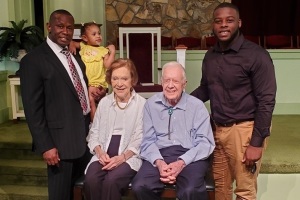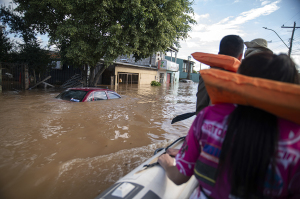Casey Anthony Trial Defense Day 1: Absence of DNA, Blood, Heart Sticker Residue
The defense completed presenting their first day of witnesses Thursday afternoon in the Casey Anthony trial, calling to the stand several FBI experts and investigators who examined various pieces of evidence for DNA or blood.
Robin Maynard, a former crime scene investigator with the Orange County Sheriff’s Office, took the stand again for a brief examination after the lunch recess.
Defense attorney Jose Baez asked Maynard to describe the coordinates of where she found the heart-shaped sticker collected from the wooded area 2-year-old Caylee was discovered in.
She first explained that the sticker was found through sifting operations of buckets, not from the primary search area, and was mapped on what investigators called “Lane 6,” 45 feet from the baseline.
Maynard also recalled that a bone was found in “Lane 6,” although she was unsure how many feet from the baseline it was.
Prosecution previously tried to connect the heart-shaped sticker to similar ones found in a box and a scrapbook in Casey’s bedroom.
Ronald Murdock, a supervisor at the forensics unit of the Orange County’s Sheriff Office was also brought back to testify, and was asked to show the jury how far the heart-shaped sticker collected by Maynard was from the area where Caylee’s skull was first found.
He approximated 30 feet, and marked the location on the evidence submitted.
Crime scene investigator Jennifer Welch returned for her fourth time to the court, questioned about the large number of disposable items collected in the wooded area off Suburban Drive. She had previously stated that over 300 items were collected from the area.
Welch was then shown a series of photographs of trash items gathered from the crime scene, and was asked if any of the items in the pictures were sent to the laboratory for further testing. She could not recall any items that were.
During cross-examination, Prosecutor Linda Drane Burdick asked, “Would it be fair to characterize the area where Caylee’s remains were found as a trash dump?”
She responded yes, that’s how she would classify it as.
Lorie Gottesman, an FBI supervisory forensic document examiner, also took the stand, admitted as an expert in the area of questioned document examination.
Gottesman received three pieces of duct tape from the medical examiner’s office, which were found with Caylee’s remains, to determine whether or not she was able to detect a heart-shaped sticker on it or any remnants of it.
She concluded that she was unable to see any sticker or sticker fragment with both the naked eye and a special tool called the Video Spectral Comparator, which examined items that could not be detected by the human eye.
It was later reported that she had contaminated one of the pieces of tape with her DNA, though she had no idea how it could have happened.
Gottesman was also given different pieces of plastic, including those recovered from the wooded area and from the Anthonys’ home, and was asked to give an overall assessment of the plastic.
She was not able to match any of the plastic bags from the crime scene to the ones in the Anthonys’ home.
The last witness called to the stand on Thursday by the defense was Cary Oien, a section chief of scientific analysis at the FBI lab and a former unit chief in the trace evidence unit. He was also admitted as an expert witness, but in the area of hair and fiber analysis.
In September of 2008, he examined an item of evidence, a shovel that Casey borrowed from her neighbor, and found human hair.
A sticker that was found on the shaft of the shovel revealed a quarter inch human hair that exhibited Caucasian characteristics. It was too small to compare to the other hairs that his colleagues had examined however.
During cross-examination, Assistant State Attorney Jeff Ashton highlighted the insignificance of the hair by asking, “You don’t know where it came from, don’t know who it belongs to, don’t know how long its been there, what it means.”
Oien responded, “Other than it’s a Caucasian hair strand.”
Earlier Thursday morning, Gerardo Bloise, an Orange County crime scene investigator, and Heather Seubert, a chief agent at the FBI lab testified.
Though both found no blood or DNA profile from the evidence gathered in the wooded area, the Anthony home, or Casey’s car, Ashton pointed out that the absence of blood did not indicate absence of crime and that outside elements could have decreased or diminished DNA profiling.
Casey, 25, is accused of first-degree murder of her 2-year-old daughter. If convicted, she faces the death penalty.
She pleads not guilty and maintains that her daughter accidentally drowned in her parents’ pool, while prosecution states that she suffocated Caylee and dumped her body in the nearby woods.




























